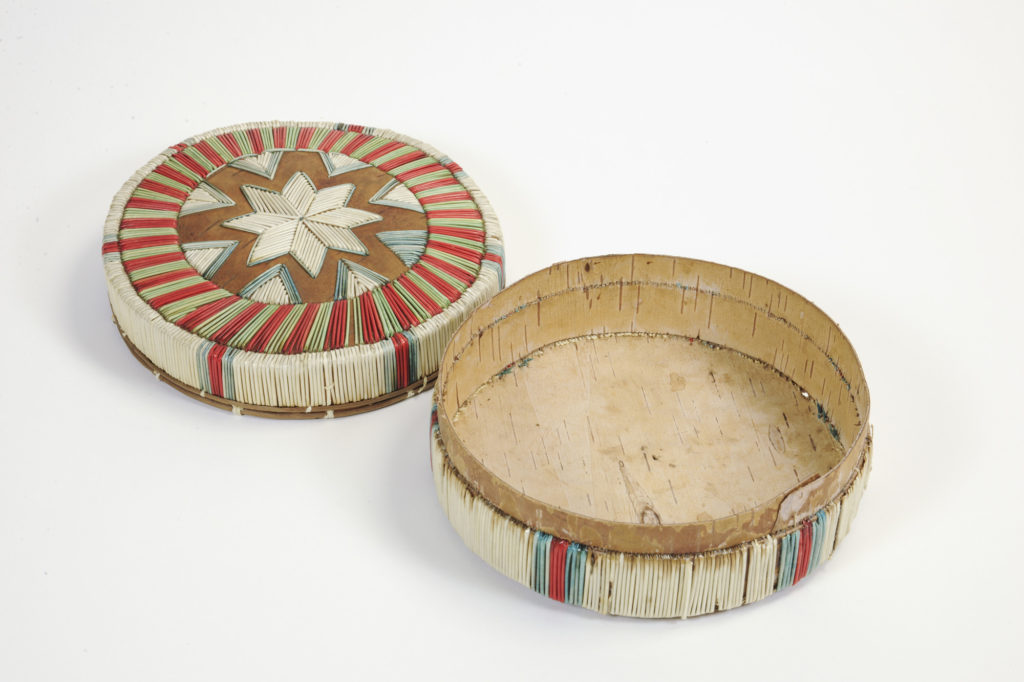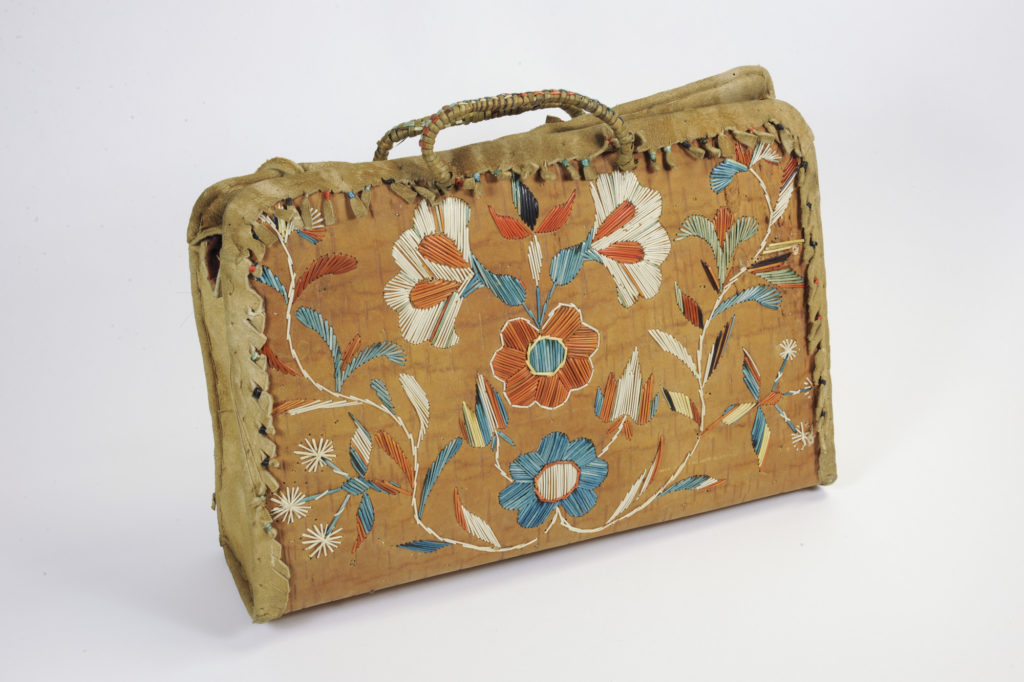Porcupine quills are hollow, and once their sharp tip has been cut, they can easily be flattened and sewn on to objects as decoration. They can also be wrapped around objects like on the handles of the second image. Sometimes, they were woven into objects. Porcupine quills are often dyed, so that color can be part of the decoration.
Several Native American tribes used to have porcupine quillers as some of their members. Some still do. Often, the porcupine quillers were women. Sometimes porcupine quilling was considered to be a spiritual craft. The Arapaho, Odawa, and Blackfoot tribes are some of the tribes for which quilling had spiritual significance. Sometimes the women who practiced the spiritual craft wore paint on their faces to protect them from evil spirits while they worked.
Around 1850 quilling started to be replaced with the craft of beading, because beads had more colors, and they did not have to be dyed, softened, trimmed, and flattened before use.
There is a small bit of information in the menu of recent blog posts to the right, under the title, ‘Two Types of Quilling’, or you can go to the ‘Home’ page above and find the same blog there.

